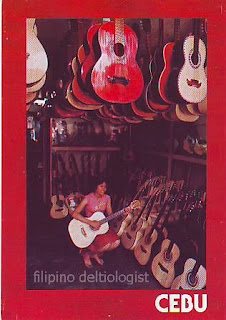Postcard Type: View card with blue border
Printed by: JMC Press, Inc., Quezon City
Purchased at Goodwill Bookstore
The postcard shows one of the many white sand beaches that Cebu offers to beach lovers. The postcard, however, did not mention the name of the island or the beach.
Cebu is one of the many island provinces in the Philippines, and is surrounded by 167 smaller islands. Thus, Cebu offers the best beaches in the country like those found in Moalboal, Nalusuan, Badian, Mactan, Bantayan, Malapascua, Olango and the Camotes Islands (Pacijan island, Poro island, Ponson island and Tulang island).
The back of the postcard reads:
Cebu and its neighboring island of Mactan contain many beautiful beaches with facilities ranging from deluxe to idyllic.
Cebu and its neighboring island of Mactan contain many beautiful beaches with facilities ranging from deluxe to idyllic.









